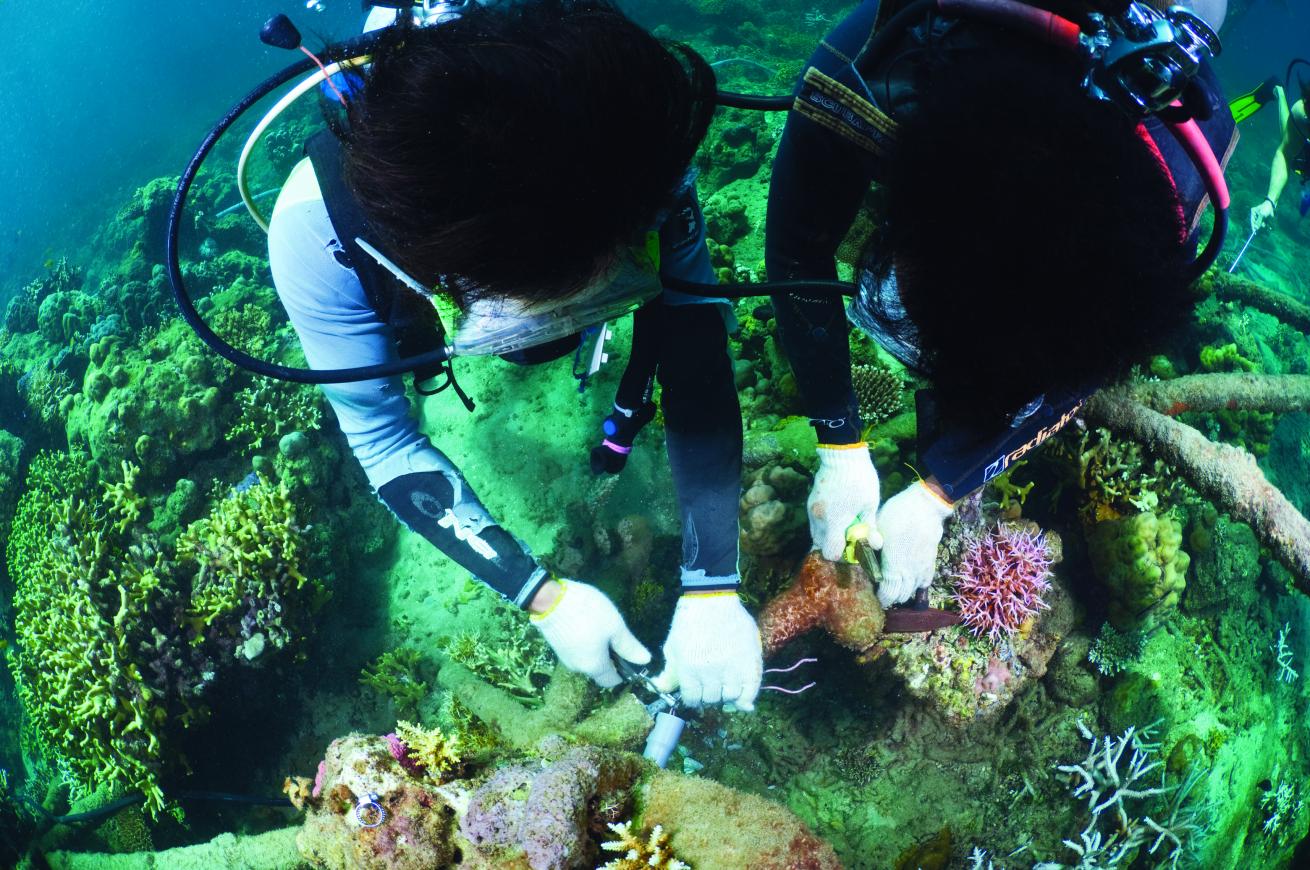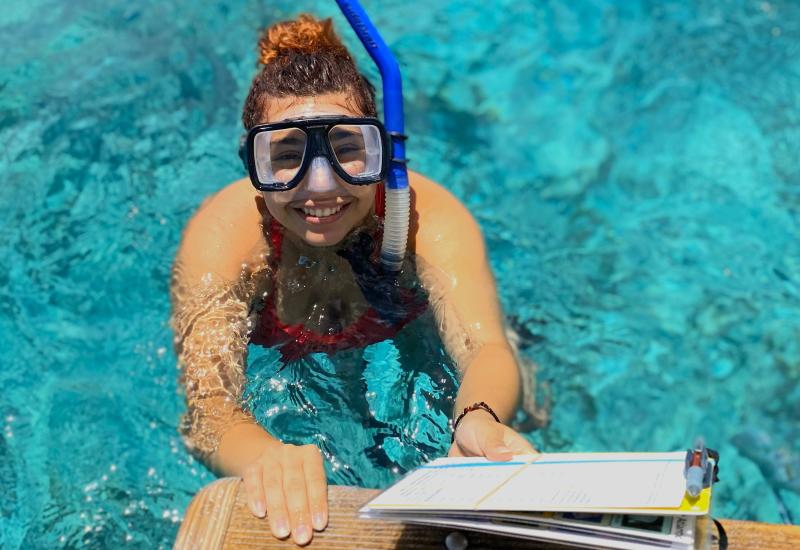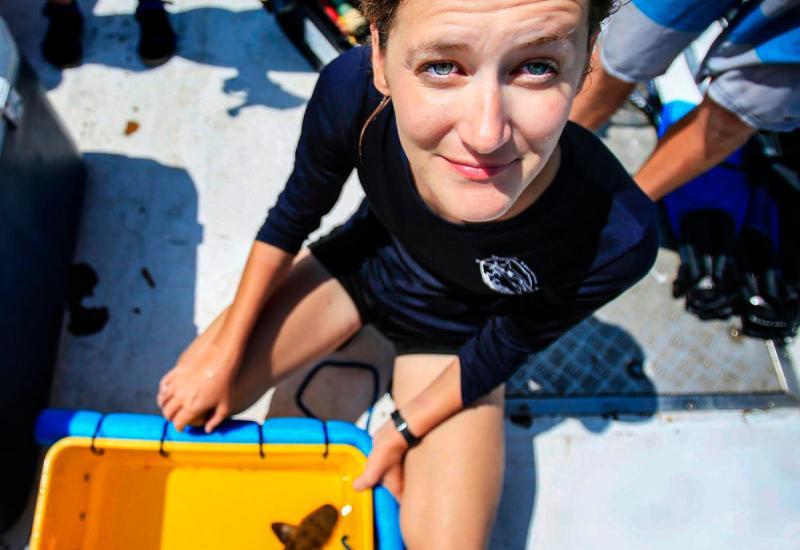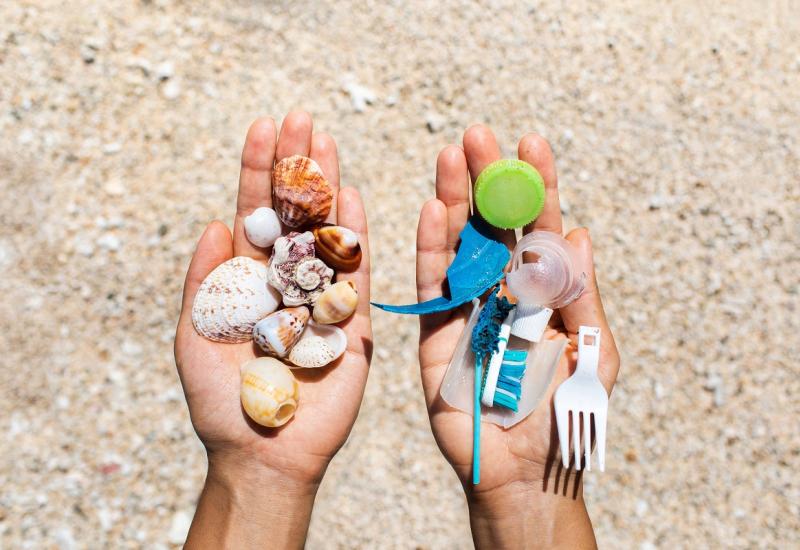It Takes a Village: Kosrae Coral Monitoring Project

Kosrae Village
Matthew Oldfield
Pristine fringing reefs, cerulean waters, mild currents and abundant marine life make the remote Pacific island of Kosrae a paradise for novice and experienced divers alike. Still relatively unknown to tourists, Kosrae remains free from the high-rise hotels and crowds found on many tropical islands.
But there is a dive resort there actively trying to attract a crowd: Kosrae Village, an eco-lodge and PADI Five Star Dive Resort, has worked since 1996 with volunteer divers on one of the longest-running reef-survey projects in the world — the Kosrae Coral Monitoring Project — which brings together local and foreign divers to collect data for use by scientists around the world.
More than 15 years ago, Americans Bruce Brandt and Katrina Adams and Kosrae native Madison Nena became concerned about local fishing and boating practices impacting the long-term health of reef ecosystems. Along with local government and community members, the trio helped create a plan that would sustain local ways of life while protecting the reefs for future generations.
In 1996, their newly opened Kosrae Village partnered with California-based grass-roots nonprofit OceanEarth to start the Kosrae Coral Monitoring Project, with the first group of volunteer divers coming from the Northern California Underwater Photographic Society.
During the early years of the project, survey techniques and locations were researched. Mooring buoys were installed in 1997 for use as anchor points for fishing and diving boats. Photography was added to the program in 2011 as a better way to record observations of marine species. Today, information from the coral monitoring project is shared with local and regional databases, and is available to interested parties internationally.
The main project is held annually each October. Volunteers are taught to safely survey Kosrae’s hard coral and marine life. An average of more than 150 feet of visibility makes the turtles, tropical reef fish, rainbow runners, manta rays and whale sharks easy to spot. Divers might see bumphead parrotfish, thanks to the protection status this species gained after data collected during the coral-monitoring project revealed how threatened it was. The Kosrae Coral Monitoring Project has contributed to the creation of protected marine areas, the identification of new species, the installation of more than 60 mooring buoys and — perhaps most important — changes in local attitudes about sustainable fishing practices.
Make it Happen
**Join: **Costs are subsidized by Kosrae Village; 2012 package prices were $1,850 per person for 13 nights’ lodging, state taxes, nitrox and all other diving-related expenses. For info, go to kosraevillage.com and select Ocean Exploration/ Coral Monitoring.
Share: Kosrae Village invites dive shops and clubs to help throughout the year. There are more than 20 sites being monitored.
Learn: The Kosrae Coral Monitoring Project is one of many local reef-protection projects.
Dry Off: Between dives, there’s plenty to do on land. Visitors can explore Kosrae’s cloud forest and kayak mangroves, discover archaeological sites, and learn about local customs like boat carving and weaving.
Partner: Without the help of OceanEarth, a 501(c)3 organization, the Kosrae Coral Monitoring Project might never have started.

Matthew Oldfield
Pristine fringing reefs, cerulean waters, mild currents and abundant marine life make the remote Pacific island of Kosrae a paradise for novice and experienced divers alike. Still relatively unknown to tourists, Kosrae remains free from the high-rise hotels and crowds found on many tropical islands.
But there is a dive resort there actively trying to attract a crowd: Kosrae Village, an eco-lodge and PADI Five Star Dive Resort, has worked since 1996 with volunteer divers on one of the longest-running reef-survey projects in the world — the Kosrae Coral Monitoring Project — which brings together local and foreign divers to collect data for use by scientists around the world.
More than 15 years ago, Americans Bruce Brandt and Katrina Adams and Kosrae native Madison Nena became concerned about local fishing and boating practices impacting the long-term health of reef ecosystems. Along with local government and community members, the trio helped create a plan that would sustain local ways of life while protecting the reefs for future generations.
In 1996, their newly opened Kosrae Village partnered with California-based grass-roots nonprofit OceanEarth to start the Kosrae Coral Monitoring Project, with the first group of volunteer divers coming from the Northern California Underwater Photographic Society.
During the early years of the project, survey techniques and locations were researched. Mooring buoys were installed in 1997 for use as anchor points for fishing and diving boats. Photography was added to the program in 2011 as a better way to record observations of marine species. Today, information from the coral monitoring project is shared with local and regional databases, and is available to interested parties internationally.
The main project is held annually each October. Volunteers are taught to safely survey Kosrae’s hard coral and marine life. An average of more than 150 feet of visibility makes the turtles, tropical reef fish, rainbow runners, manta rays and whale sharks easy to spot. Divers might see bumphead parrotfish, thanks to the protection status this species gained after data collected during the coral-monitoring project revealed how threatened it was. The Kosrae Coral Monitoring Project has contributed to the creation of protected marine areas, the identification of new species, the installation of more than 60 mooring buoys and — perhaps most important — changes in local attitudes about sustainable fishing practices.
Make it Happen
**Join: **Costs are subsidized by Kosrae Village; 2012 package prices were $1,850 per person for 13 nights’ lodging, state taxes, nitrox and all other diving-related expenses. For info, go to kosraevillage.com and select Ocean Exploration/ Coral Monitoring.
Share: Kosrae Village invites dive shops and clubs to help throughout the year. There are more than 20 sites being monitored.
Learn: The Kosrae Coral Monitoring Project is one of many local reef-protection projects.
Dry Off: Between dives, there’s plenty to do on land. Visitors can explore Kosrae’s cloud forest and kayak mangroves, discover archaeological sites, and learn about local customs like boat carving and weaving.
Partner: Without the help of OceanEarth, a 501(c)3 organization, the Kosrae Coral Monitoring Project might never have started.










